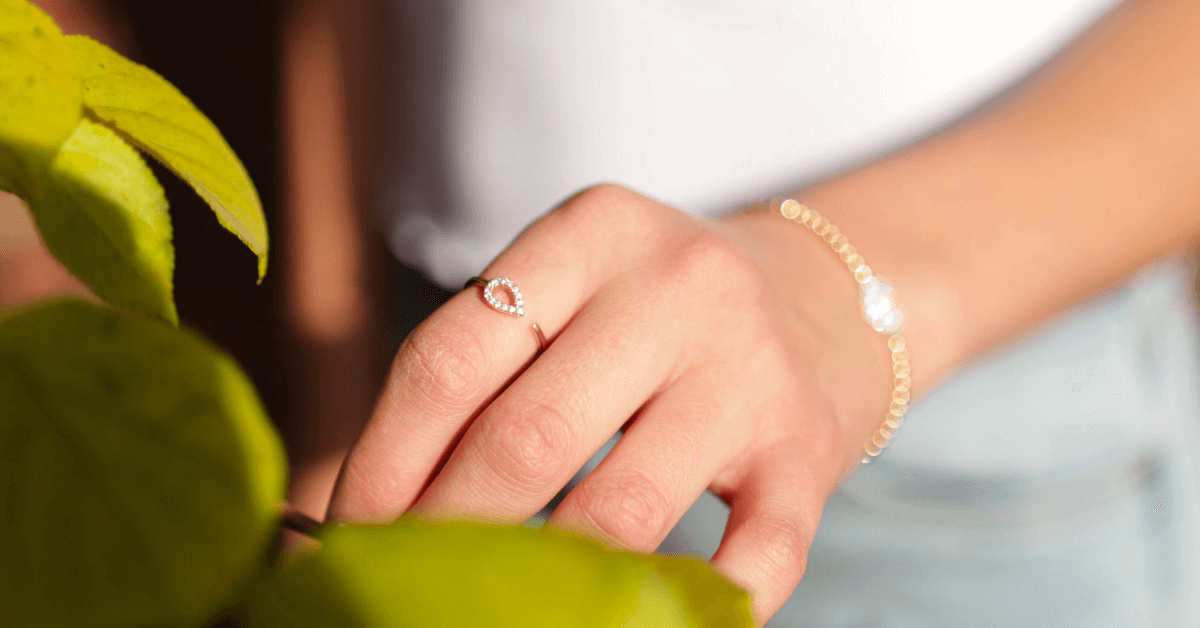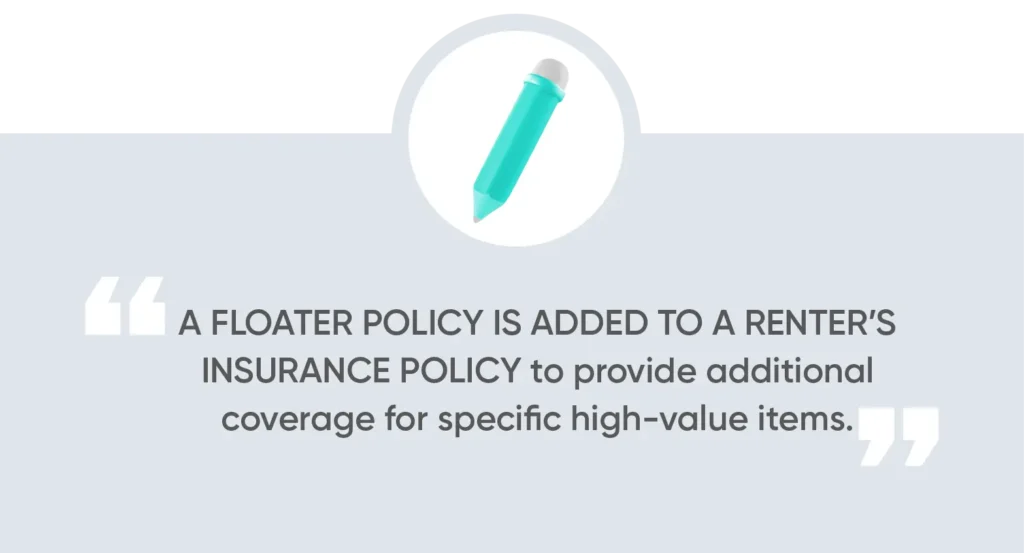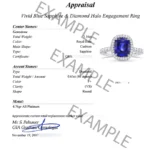In an increasingly mobile and often transient world, renting has become a dominant lifestyle choice for millions. While the freedom of not owning a home can be liberating, it also brings a unique set of responsibilities, particularly concerning one’s personal belongings. Many renters diligently secure their living spaces, perhaps even installing smart home devices, but often overlook a critical layer of financial protection: renters insurance. This essential policy is designed to safeguard your possessions against a myriad of perils, from fire and theft to vandalism and certain natural disasters. However, a common misconception, and indeed a significant area of confusion, revolves around the extent to which renters insurance truly covers valuable items, especially jewelry.
Jewelry, whether it’s an heirloom engagement ring, a cherished watch, or a collection of precious gemstones, often holds immense financial and sentimental value. For many, these pieces represent significant investments or irreplaceable memories. The thought of losing them due to theft, accidental damage, or even mysterious disappearance can be deeply unsettling. This concern naturally leads to the question: “Does renters insurance cover jewelry?” The answer, while generally “yes,” is nuanced and comes with important caveats that every renter should understand before an unfortunate incident occurs.

The standard renters insurance policy typically provides coverage for personal property, but it’s not a blanket protection for every item you own, especially those of high value. Most policies include specific limitations, known as “sub-limits” or “special limits of liability,” for certain categories of items, and jewelry almost always falls into this category. These limits mean that while your policy might cover up to $25,000 in total personal property, it might only pay out a fraction of that amount for a single piece of jewelry or for all jewelry combined, even if its actual value far exceeds that sub-limit. This critical detail is often discovered only at the time of a claim, leading to significant disappointment and financial loss.
Understanding these intricacies is not just about avoiding financial heartache; it’s about proactive risk management and ensuring peace of mind. In today’s landscape, where the cost of replacing valuable items can be substantial, relying solely on the basic coverage of a standard renters policy for your precious jewelry could be a costly mistake. This comprehensive guide will delve deep into the specifics of renters insurance and jewelry coverage, exploring typical policy limitations, the options available for enhanced protection, and practical steps you can take to safeguard your valuable assets effectively.
Understanding Standard Renters Insurance and Jewelry Limitations
Renters insurance, at its core, is designed to protect tenants from financial losses associated with unforeseen events affecting their personal belongings and liability. A typical policy consists of three main components: personal property coverage, liability coverage, and additional living expenses coverage. While personal property coverage is what most people focus on when thinking about their belongings, it’s crucial to understand that not all items are treated equally under the policy’s terms. This is particularly true for high-value items such as jewelry.
What Standard Personal Property Coverage Entails
Standard renters insurance policies usually cover your personal belongings against a list of “named perils.” These perils commonly include:
- Fire or Lightning
- Windstorm or Hail
- Explosion
- Riot or Civil Commotion
- Aircraft or Vehicles
- Smoke
- Vandalism or Malicious Mischief
- Theft
- Falling Objects
- Weight of Ice, Snow, or Sleet
- Accidental Discharge or Overflow of Water or Steam
- Sudden and Accidental Tearing Apart, Cracking, Burning, or Bulging (of a heating/cooling system)
- Freezing (of plumbing)
- Volcanic Eruption
If your jewelry is lost or damaged due to one of these covered perils, the policy would theoretically provide coverage. However, this is where the concept of “sub-limits” becomes critically important.
The Critical Role of Sub-Limits for Valuables
Most renters insurance policies impose specific limits on the payout for certain categories of valuable items, including jewelry. These are known as special limits of liability or sub-limits. The rationale behind these limits is to manage the insurer’s risk. High-value items like jewelry are easily transportable, susceptible to theft, and can vary wildly in value, making them a higher risk to insure without specific valuation. While your overall personal property coverage might be, for instance, $25,000, the sub-limit for jewelry might be significantly lower, often ranging from $1,000 to $2,500 per item or for the total loss of all jewelry in a single incident. This means that if you have an engagement ring valued at $10,000 and it’s stolen, your standard policy might only reimburse you $2,500, leaving you with a substantial financial shortfall.
Common Items Subject to Sub-Limits
It’s not just jewelry that falls under these special limits. Other categories of personal property often subject to sub-limits include:
- Furs
- Firearms
- Silverware, goldware, or pewterware
- Stamps, coins, and other collectibles
- Business property (when kept at home)
The exact sub-limits and the specific categories of items they apply to will vary by insurer and policy. It is imperative to review your policy’s declaration page or speak directly with your insurance provider to understand these limitations fully. Many individuals only discover these limitations after a loss has occurred, leading to significant frustration and unexpected out-of-pocket expenses.
Actual Cash Value (ACV) vs. Replacement Cost Value (RCV)
Another crucial aspect of standard personal property coverage is how claims are paid out: either based on Actual Cash Value (ACV) or Replacement Cost Value (RCV). ACV takes into account depreciation, meaning the payout will be the cost to replace the item minus its accumulated depreciation. For instance, if your five-year-old watch is stolen, an ACV policy would pay out what a five-year-old watch of that type is worth today, not the cost of a brand-new one. RCV, on the other hand, pays out the cost to replace the item with a new one of similar kind and quality, without deduction for depreciation. While RCV coverage offers better protection, it typically comes with a slightly higher premium. For valuable items like jewelry, the difference between ACV and RCV can be substantial, and it’s a factor that should be carefully considered when purchasing or reviewing your policy. Most standard renters policies default to ACV for personal property unless RCV is specifically added or chosen.
In summary, while renters insurance does cover jewelry against specified perils like theft or fire, the coverage is often limited by low sub-limits. This means that if you own valuable pieces, relying solely on your standard policy may leave you underinsured. Understanding these limitations is the first step toward securing adequate protection for your cherished possessions.
Beyond the Basics: Enhancing Your Jewelry Protection with Scheduled Coverage
Given the inherent limitations of standard renters insurance policies regarding high-value items like jewelry, relying solely on basic coverage is often insufficient for individuals with significant pieces. Fortunately, insurance companies offer solutions specifically designed to provide comprehensive protection for your most treasured possessions. These solutions typically involve what is known as “scheduled personal property” coverage, often referred to as a Personal Articles Floater or simply a jewelry floater.
The Power of a Personal Articles Floater
A Personal Articles Floater is an endorsement or a separate policy that you add to your existing renters insurance. Unlike the broad, blanket coverage with sub-limits that standard personal property provides, a floater allows you to insure specific items for their appraised value. This means you list each valuable item individually on your policy, along with its specific worth. For jewelry, this is almost always the recommended approach for pieces exceeding the standard policy’s sub-limits (e.g., above $1,000 or $2,500, depending on your insurer).
Key Benefits of Scheduling Your Jewelry
Scheduling your jewelry through a floater offers several significant advantages:
- Higher Coverage Limits: The most obvious benefit is that you can insure your jewelry for its full appraised value, without being constrained by the low sub-limits of a standard policy. If your engagement ring is appraised at $15,000, you can schedule it for exactly that amount.
- Broader Perils Covered: Scheduled property policies often cover a wider range of perils than standard renters insurance. While a basic policy covers “named perils” like theft or fire, a floater typically provides “all-risk” coverage. This means it covers all types of loss or damage unless specifically excluded in the policy. Crucially, this often includes “mysterious disappearance” and accidental loss (e.g., dropping a ring down a drain, losing an earring while traveling), which are almost never covered by standard renters insurance.
- No Deductible (Often): Many Personal Articles Floaters are written with a $0 deductible, meaning if you make a claim, you receive the full insured amount without having to pay an out-of-pocket deductible first. This is a significant advantage compared to standard renters insurance, which typically has deductibles ranging from $500 to $1,000 or more.
- Replacement Cost Value (RCV) Coverage: Scheduled items are almost always covered on a Replacement Cost Value basis, meaning you’ll receive the amount needed to replace the item with a new one of similar kind and quality, without depreciation. This ensures you can truly replace your cherished piece.
The Appraisal Process: A Crucial Step
To schedule your jewelry, insurance companies will almost always require a recent appraisal from a qualified, independent gemologist or jeweler. This appraisal determines the current market value of your item, which is the basis for the insured amount. It’s important to:
- Obtain a detailed appraisal that includes a description of the item, its materials, carat weight, cut, color, clarity (for diamonds), and a clear statement of its value.
- Keep the appraisal updated, especially for very high-value pieces. Jewel prices can fluctuate, and an outdated appraisal might leave you underinsured. Many experts recommend updating appraisals every 2-5 years, particularly for items like engagement rings or unique antique pieces.
Case Study: The Difference Scheduling Makes
Consider Sarah, who owns a diamond necklace valued at $8,000. Her standard renters insurance policy has a jewelry sub-limit of $1,500 per loss. One day, her apartment is burglarized, and the necklace is stolen.
Scenario 1: No Scheduled Coverage
Sarah files a claim with her renters insurance. Due to the $1,500 sub-limit, the insurer pays her only $1,500, even though the necklace was worth $8,000. She is out $6,500, plus her deductible for other stolen items.
Scenario 2: With Scheduled Coverage
Before the theft, Sarah had obtained an appraisal for the necklace and added a Personal Articles Floater to her renters policy, scheduling the necklace for $8,000 with a $0 deductible. When the necklace is stolen, the insurer pays her the full $8,000 (assuming it was covered by a covered peril, which theft is). Sarah is able to replace her necklace without significant financial strain.
This example clearly illustrates the financial protection and peace of mind that scheduling your valuable jewelry can provide. While adding a floater will increase your premium, the cost is typically a small percentage of the item’s value (often around 1-2% annually) and is a worthwhile investment for irreplaceable or highly valuable pieces. It’s a proactive step that transforms your jewelry coverage from limited to comprehensive, ensuring that your cherished items are truly protected.
Practical Steps and Considerations for Jewelry Protection
Protecting your valuable jewelry goes beyond simply purchasing insurance; it involves a combination of proactive measures, diligent record-keeping, and understanding the nuances of your policy. Taking these practical steps can significantly improve your chances of a smooth claim process and ensure you receive appropriate compensation if a loss occurs.
Comprehensive Inventory and Documentation
One of the most crucial steps you can take is to create a detailed inventory of all your valuable jewelry. This isn’t just a recommendation; it’s an absolute necessity for any insurance claim. An inventory should include:
- Detailed Descriptions: For each piece, note the type of item (ring, necklace, watch), materials (gold, silver, platinum), gemstones (type, cut, carat weight), and any unique identifying features.
- Photographs and Videos: Take clear, well-lit photos of each item from multiple angles. A video showing the item in detail can also be incredibly useful.
- Purchase Receipts: Keep original receipts or certified copies. These provide proof of ownership and initial value.
- Appraisals: As discussed, professional appraisals are essential for scheduling items. Keep these documents safe and update them periodically.
- Certificates: For diamonds or other precious stones, any grading certificates (e.g., GIA, AGS) should be kept with your records.
Store this documentation in a secure location, preferably off-site or digitally in a cloud-based service, so it’s accessible even if your home is damaged or burglarized. An organized inventory significantly streamlines the claims process and helps prevent disputes over value.
Secure Storage and Prevention
While insurance provides financial recovery, preventing a loss in the first place is always preferable. Consider these security measures for your jewelry:
- Home Safes: Invest in a high-quality, fire-resistant, and bolted-down home safe for items you wear frequently. Make sure it’s sufficiently heavy or anchored to prevent easy removal.
- Bank Safe Deposit Boxes: For extremely valuable pieces or items you wear only on special occasions, a bank safe deposit box offers a very high level of security. Be aware that items in a safe deposit box are generally not covered by your standard homeowners or renters policy and may require a specific endorsement or separate policy.
- Discretion: Avoid openly displaying valuable jewelry, especially on social media, which can inadvertently signal your home as a target.
- Home Security Systems: A monitored alarm system can deter burglars and may even qualify you for a discount on your renters insurance premium.
Understanding the Claims Process for Jewelry
If you experience a loss involving your jewelry, knowing the correct steps to take can make a significant difference:
- Report Theft to Police: For stolen jewelry, immediately file a police report. Your insurance company will require a copy of this report for a theft claim.
- Notify Your Insurer: Contact your insurance provider as soon as possible to report the loss. They will guide you through their specific claims process.
- Provide Documentation: Submit your inventory, photos, receipts, and appraisals to support your claim. The more documentation you have, the smoother the process will be.
- Cooperate with the Adjuster: An insurance adjuster will investigate your claim. Be honest and provide all requested information.
- Understand Payout Options: Depending on your policy, the insurer might offer a cash payout, or they might work with a jeweler to replace the item directly. For scheduled items, the payout is typically the appraised value.
Reviewing Your Policy Annually
Life changes, and so does the value of your possessions. It’s crucial to review your renters insurance policy at least once a year, or whenever you acquire new valuable items, get married, or receive significant gifts. This ensures your coverage remains adequate. Discuss with your agent:
- Any new jewelry acquisitions that might need to be scheduled.
- Changes in the value of existing scheduled items (e.g., a diamond’s market value increasing).
- Life events like marriage (new engagement ring!) or moving to a new rental.
An informed conversation with your insurance agent can help you tailor your policy to your evolving needs and prevent gaps in coverage.
Comparing Insurers and Premiums
While the cost of scheduling jewelry is generally a small percentage of its value, premiums can vary between insurers. It’s always a good idea to:
- Get Multiple Quotes: Don’t settle for the first quote. Compare rates and coverage options from several reputable insurance providers.
- Ask About Discounts: Many insurers offer discounts for bundling policies (e.g., renters and auto), having security systems, or maintaining a claim-free history.
- Understand Deductibles: While scheduled items often have a $0 deductible, your overall renters policy will have one. Choosing a higher deductible can lower your premium but means more out-of-pocket expense if you file a claim for non-scheduled items.
By taking these practical steps, renters can ensure their valuable jewelry is not only insured but also properly protected, giving them true peace of mind against potential losses.
Comprehensive Summary and Recap
The question “Does renters insurance cover jewelry?” is one that many tenants ponder, often with a hopeful assumption that their precious items are fully protected. As we’ve explored, the answer is a qualified “yes,” but one fraught with critical distinctions and limitations that every renter must grasp. Standard renters insurance policies do indeed offer coverage for personal property, including jewelry, against a list of common perils such as theft, fire, and vandalism. This basic level of protection provides a foundational safety net for your belongings within your rented space.
However, the cornerstone of understanding jewelry coverage within a standard renters policy lies in the concept of sub-limits. These are specific, often surprisingly low, maximum payout amounts for categories of high-value items, with jewelry almost universally falling under these restrictions. While your overall personal property coverage might be tens of thousands of dollars, the sub-limit for jewelry could be as little as $1,000 to $2,500 per item or per loss, regardless of the item’s true market value. This means that an expensive engagement ring or a valuable inherited watch, if stolen or destroyed, might only be partially reimbursed, leaving a significant financial gap for the owner. This limitation is a crucial point of potential vulnerability for renters who possess cherished or costly jewelry.
To bridge this gap and provide genuinely comprehensive protection, the solution often lies in enhancing your policy with a Personal Articles Floater, also known as scheduled personal property coverage. This endorsement allows you to list individual pieces of jewelry, along with their professionally appraised values, directly on your policy. The benefits of scheduling are substantial: it provides coverage up to the item’s full appraised value, often extends coverage to “all risks” (including accidental loss and mysterious disappearance



